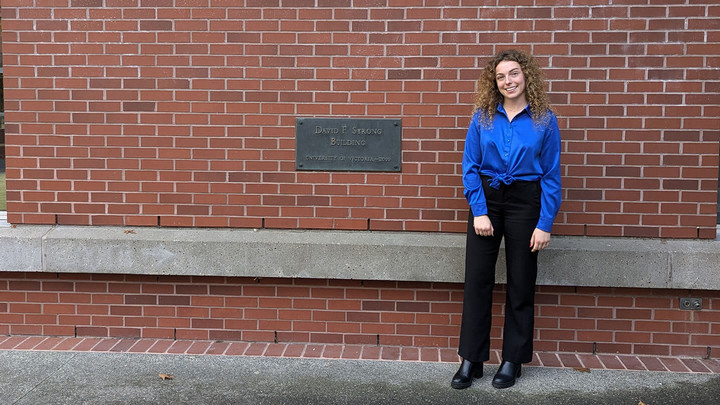Mission Impossible: Gustavson's global sustainability showdown

In just one day, students from around the globe join forces to tackle real-world sustainability challenges. BCom student Tereza Jarosova reveals how this high-energy event reshaped her views on teamwork and global impact.
What happens when you bring together students from around the world, set a ticking clock, and challenge them to solve one of the world’s most pressing issues? At the Gustavson School of Business, that’s just another day—specifically, the day of Mission Impossible. This high-energy event kicks off the core year for third-year Bachelor of Commerce (BCom) students with a focus on global sustainability. The key to success? Teamwork, cultural understanding, and shared perspectives. But here’s the real twist: it’s not about who leads; it’s about discovering what unites us.
Mission Impossible—officially called MIIISsion Impossible to highlight Gustavson’s focus on International, Integrative, Innovative and Socially Responsible/Sustainable values—has been a rite of passage for BCom students since Professor Monika Winn first created it over a decade ago. Over 300 students take part in this challenge joined by judges from campus and local businesses.
One student's perspective
For Tereza Jarosova, an international student from Denmark, Mission Impossible was more than just an academic exercise. “Each of us brought a unique story—a story no one else could tell—and that’s what united my group as a team,” she recalls. Her team’s challenge? To tackle seasonal depression in Denmark, developing an AI Pocket Psychological Assistant to support individuals during the darker months. But the solution didn’t come from one person—it grew from the diverse perspectives and shared commitment of her teammates.
At the start of the day, students meet their teammates and are briefed on the project for the first time at 8:30 am. By 1 pm, they are expected to have identified a sustainability issue, built a business plan to address it and practiced pitching it as a group. For Jarosova, the quick pace was both intense and exhilarating, but she soon realized the project was only part of the experience. “It wasn’t just about the project—it was about being vulnerable and open with one another,” she explains. “Our teamwork went beyond just dividing tasks—it was about getting to know each other on a deeper level.”
This connection, she believes, is what allowed her team to succeed. Rather than focusing solely on the hours of preparation, they shared ideas, personal experiences and, ultimately, a collective vision for their solution. “This focus on connection helped us create something we were all incredibly proud of,” she says, highlighting how their shared values enabled them to deliver an innovative and meaningful project.
New this year, the pitches were open for all participants to watch, adding another layer of learning. “Watching others was just as much of a learning experience as doing our own pitch,” says Jarosova. “It was really inspiring to see how small tweaks in presentation style or problem-solving could make such a big difference.”
Mission Impossible continues to break down cultural barriers, challenge students to think globally, and foster a sense of unity among participants. And for students like Jarosova, it offers an experience that goes far beyond the final presentation—one that builds lasting connections and sparks new ways of thinking about sustainability and teamwork.

